LA Is Full of Contradictions
Across its diverse neighborhoods, the rich historic architecture in Los Angeles reveals itself—from grand Victorians to sunlit Spanish Revival homes—telling a story of style and history.
LA is full of contradictions. A city, but sprawling like a suburb. Industry-driven, yet business deals go down in flip-flops. Full of both grit and glamour; famous, yet somehow still faceless. I asked a friend who lives there where the cool historic neighborhoods were—looking for LA’s version of the ‘Boston Brownstone’, some defining style of architecture the city is known for. I couldn’t get a straight answer. Maybe there isn’t one? What I learned is that LA’s architecture is hyper-varied by neighborhood: One block might be Spanish Colonial Revival, the next Craftsman, the next Mid-Century Modern, and so on. What LA does best is to tuck it’s architectural gems into places you don’t expect.
I spent a couple of days weaving through old neighborhoods, looking at buildings with a closer eye. Beyond just passing by or spying from an Uber, I really stopped to take each one in. The mix of styles is what always gets me in any city; grand hotels next to unassuming bungalows, 1920s glamour around the corner from a Craftsman porch. It’s that quiet mix that makes any urban area interesting. I wasn’t out searching for anything in particular, just following good light and the feeling that there’s still more to notice when it comes to historic architecture in Los Angeles.
Hancock Park & Windsor Square | Classic Revival Styles
Hancock Park is definde by classic and stately homes with pristine yards. I appreciated a range of styles: some Tudor Revival, others Classical or Mediterranean Revival. I fell for a soft pink stucco home with natural stone door frame with intricate details… and a bright teal door. The front yards feature the the kind of flowers you don’t see in New England—giant pots of succulents, flowering white climbers, and rows of manicured shrubs. I barely saw a fallen leaf or blemish—plenty of landscapers in the area, which explains it.
Over in Windsor Square, I found the most charming brick homes, some painted white, others in natural brick with with diamond-paned windows. And of course, Mediterranean motifs were everywhere—clay tile roofs, wrought iron window grilles, and arched entries. I stopped at a one historic door—perfectly imperfect—with lush green walls leading to a tucked-away backyard; hashtag garden door goals. I loved the storybook architecture the most, drawn to the fairytale quality to these blocks: charming homes with half-timber details, red doors, and curved rooflines that could belong in a Disney movie.
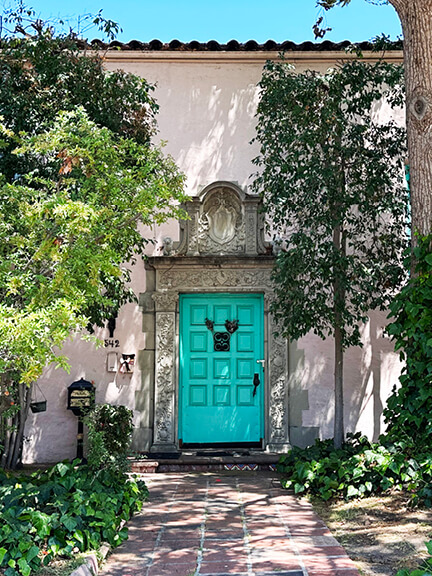
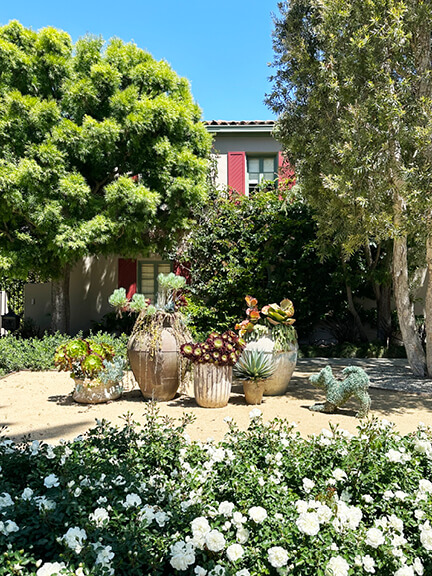
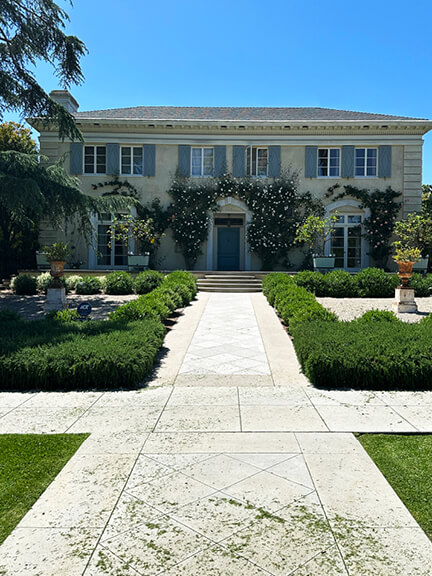
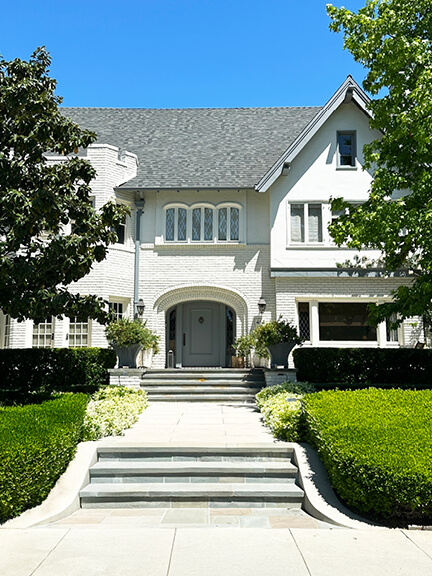
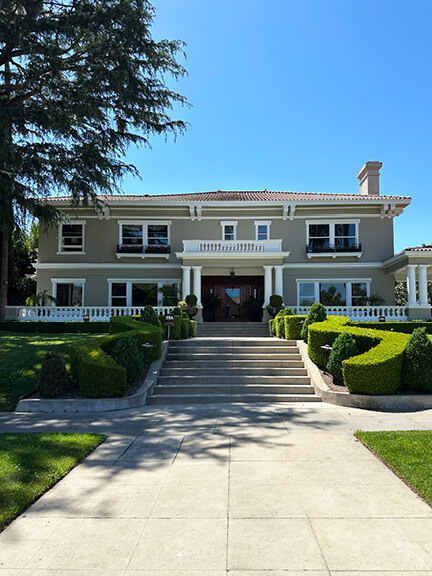
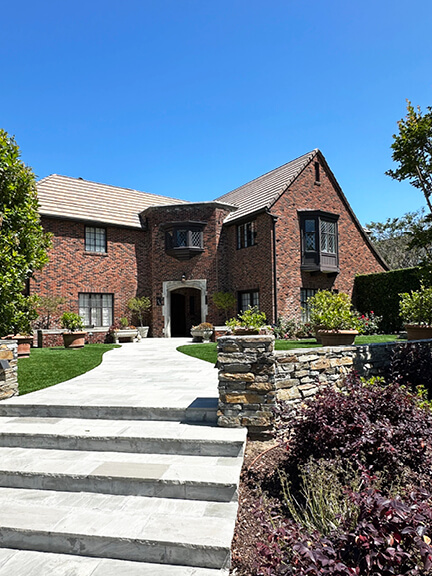
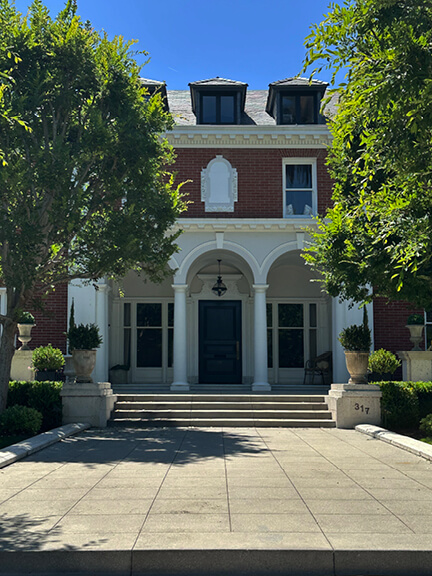
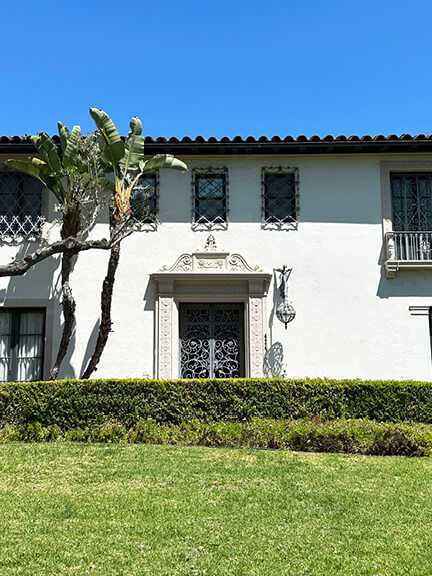
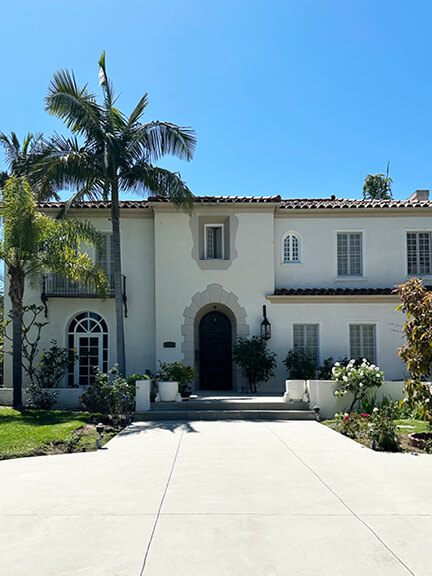
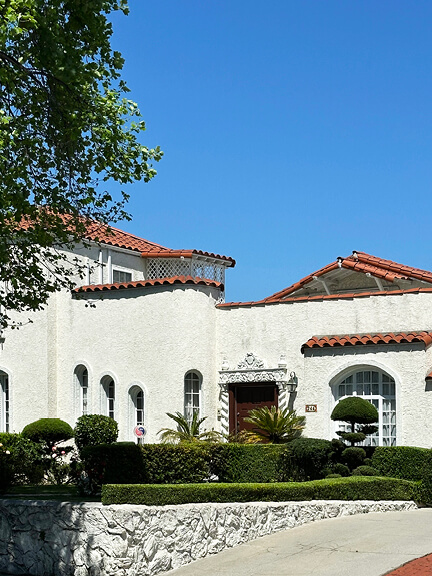
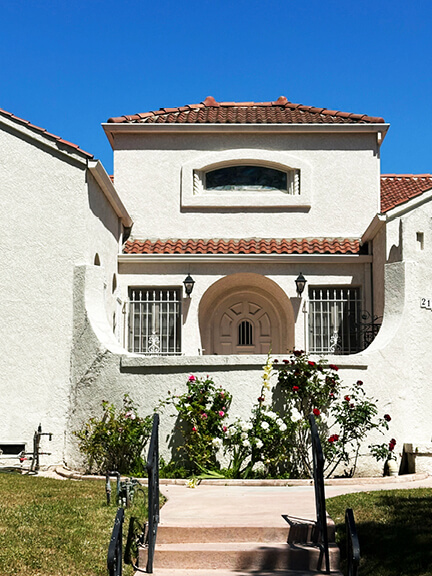
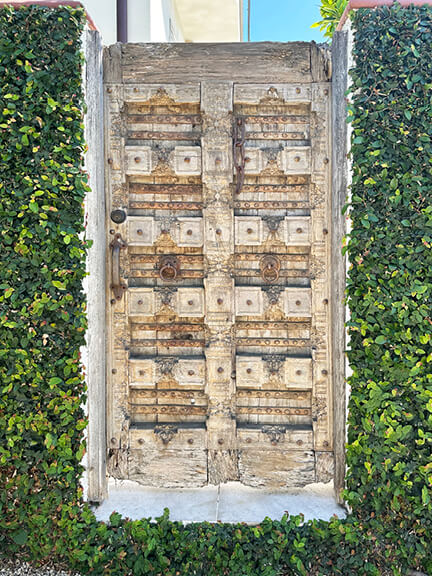
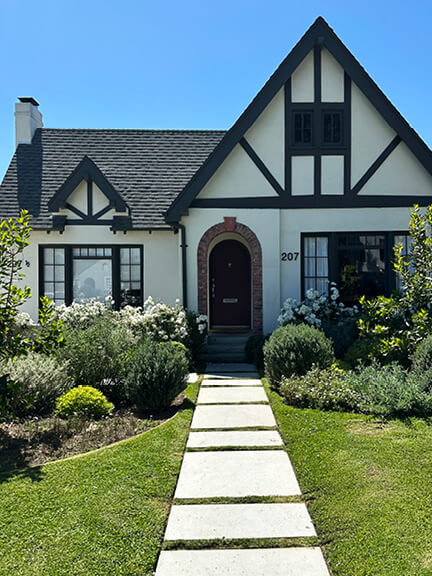
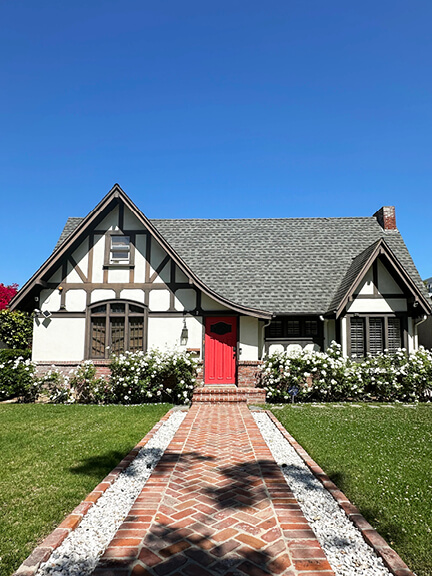
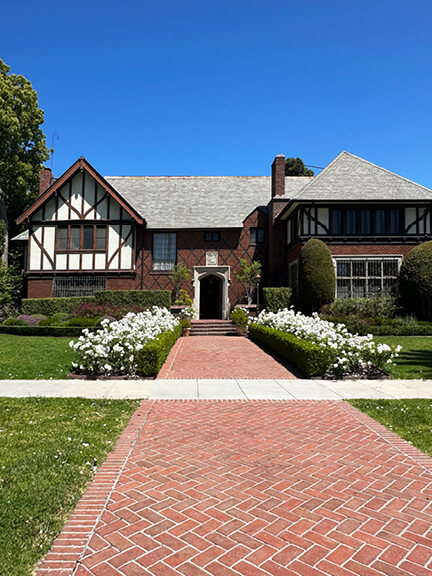
Angelino Heights | Victorian Gems on Carroll Avenue
Angelino Heights is one of the oldest neighborhoods in Los Angeles. I focused on one street, Carroll Avenue hosts a range of styles, mostly Victorian. Each one is preserved with meticulous lawns to match. Some homes are better known as the Charmed house, or the one from Teen Witch (whoa 1989—a personal 80s favorite), and of course, the Thriller music video house. I didn’t geek out on the Hollywood aspect and really just grabbed photos of my favorite and most pristine properties on the street.
A true mix of shapes and sizes—some small, some big. A navy-blue one is accented with soft yellow (or maybe an off-white) and a harlequin-patterned gable at the attic level. Of course, all the ornate details typical of a Victorian are there. Many Queen Anne styles, another home had corner angular windows extending up to the roofline and a circular turret. I always appreciate the three-colored exterior palette—navy with burgundy and off-white. A smaller light-blue home bears charming, colorful leaded glass windows. Down the street, arches made of wooden trellises create outdoor spaces and a balconies shaded from the sun, appearing as if part of the interior of the home. Multiple patterns at the shingles is always interesting. In general, I honed in on the cute details at the railings, fun colors, and small-scale spaces. My favorite—a pink cutesy with floral motifs.
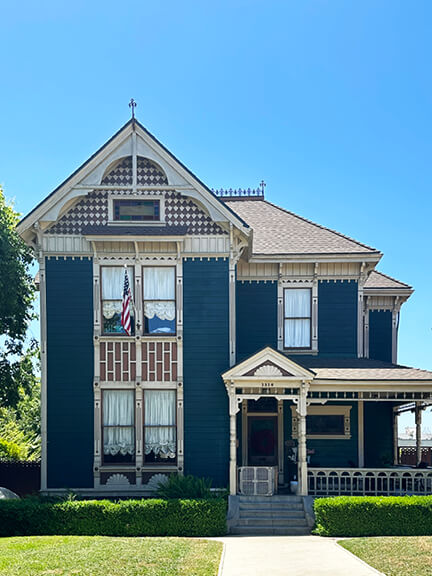
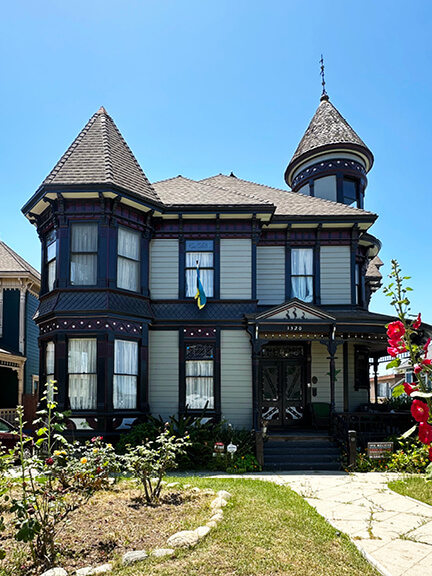
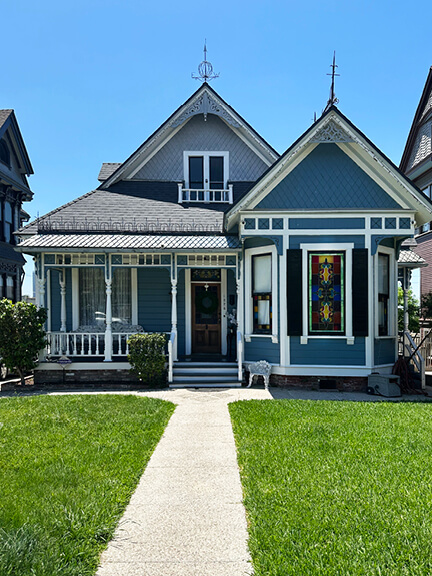
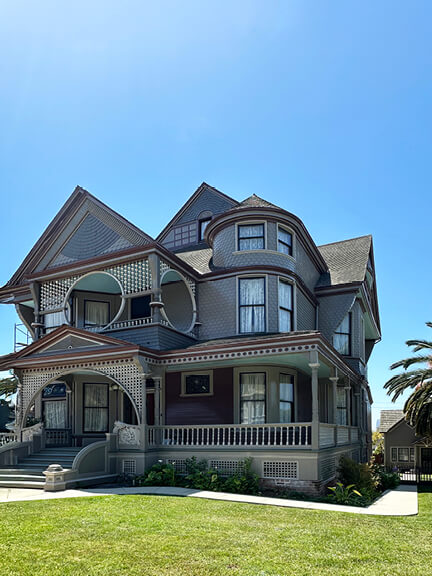
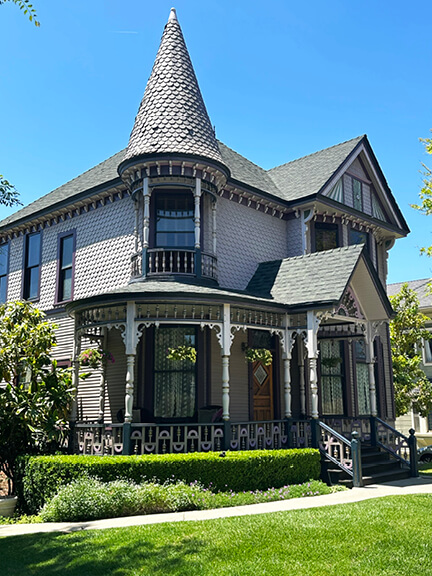
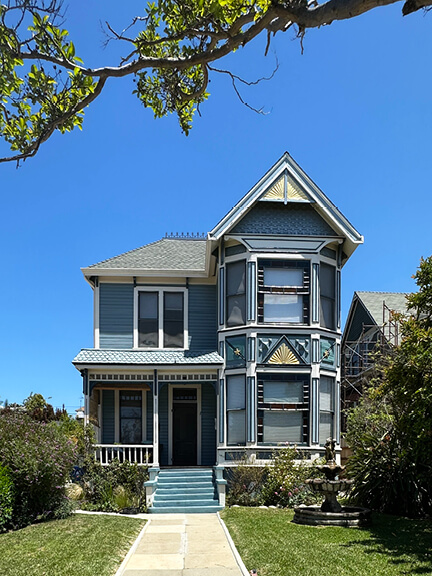
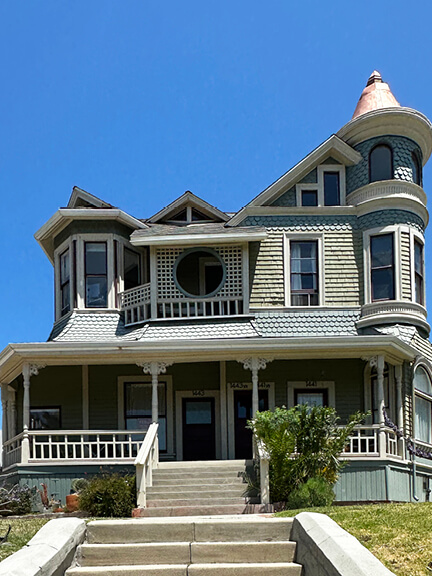
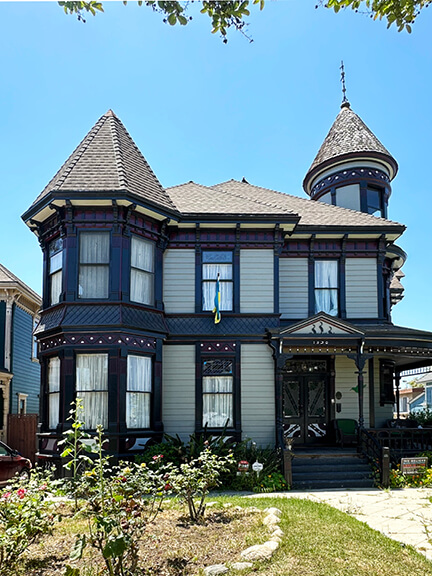
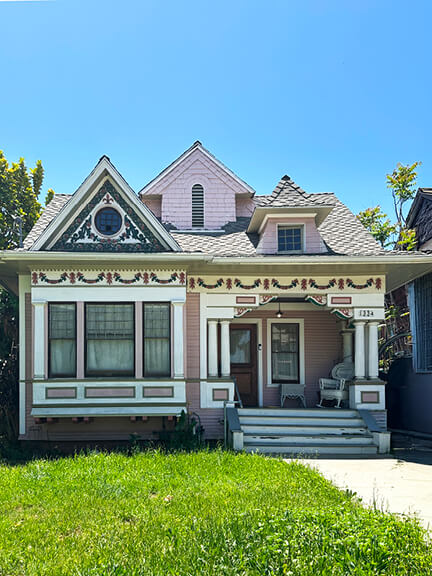
West Adams | Colonial Revival at the Fitzgerald House
The Fitzgerald House in West Adams gave me all the Kennedy vibes—for obvious reasons. A perfect example of Colonial Revivcal Style popular in the 20s and 30s. A mix of variegated brick and detailed millwork painted light green accented the off-white exterior. And, of course, the red accents—like a striking lip color—red is always a good idea. The chimney stood out as a statement of its own, integrated into the front façade and featuring a window. An arched roof detail was darling as well.
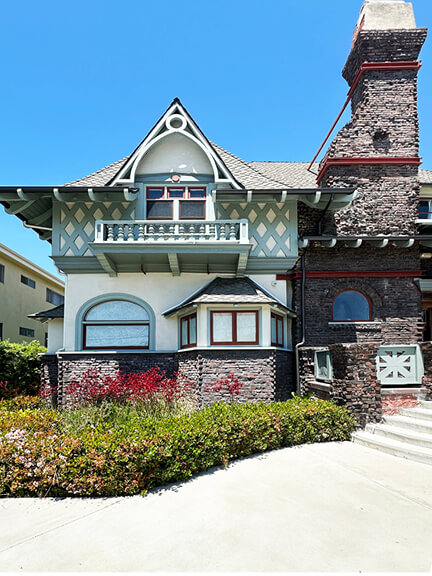
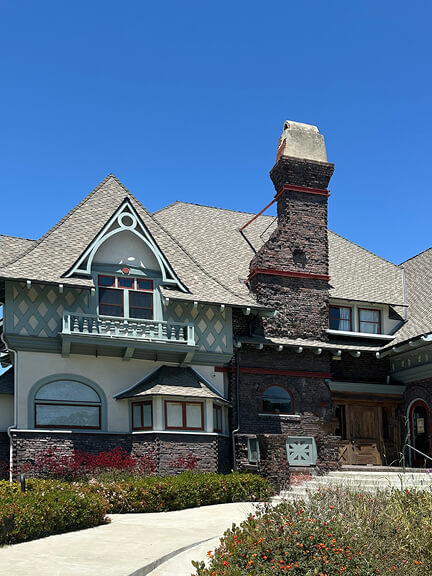
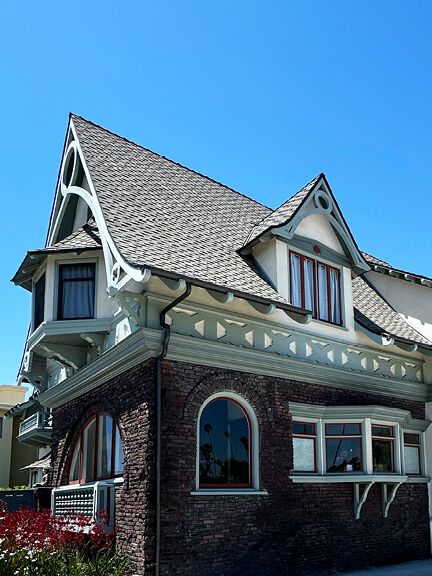
West Adams | Prairie and Craftsman Homes on Van Buren Place
On the southern edge of Koreatown, I came across Van Buren Place, a designated historic area featuring a striking mix of Craftsman, Prairie, and Period Revival architecture. Most homes were built between 1903 and 1916, part of a neighborhood developed during LA’s first major westward expansion. The street is lined with perfectly manicured front gardens—each home different, but clearly cared for. Neutral paint palettes dominate: soft greens, muted blues, warm beiges, and browns. It feels as if there’s an unspoken agreement—no clashing colors, no careless upkeep. Details like tapered porch columns, deep roof eaves, and multi-light wood windows show the richness of early 20th-century design. While no two houses are alike, the visual rhythm and restraint create a sense of order.
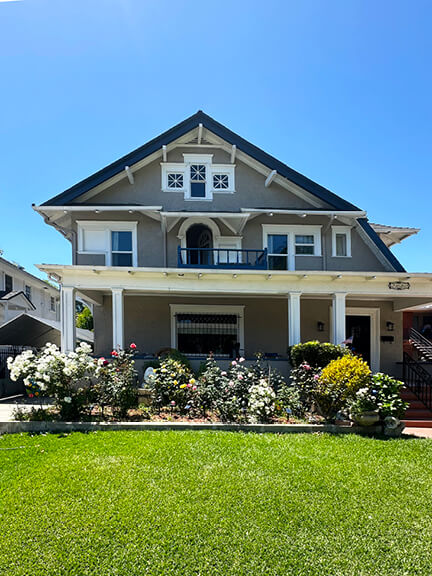
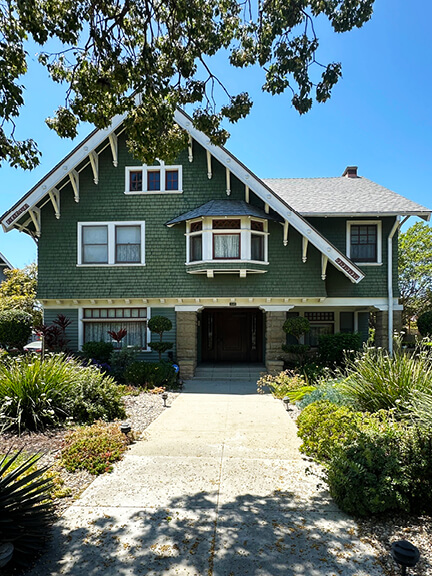
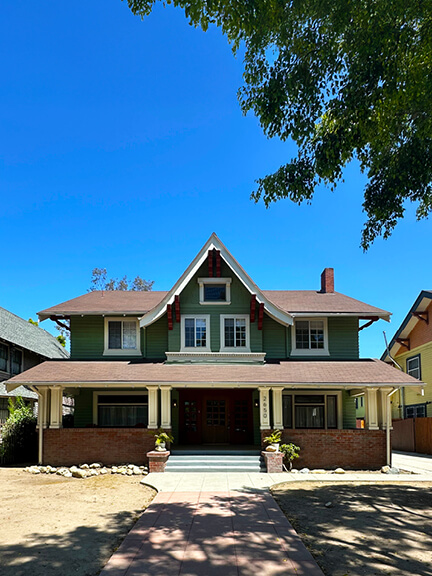
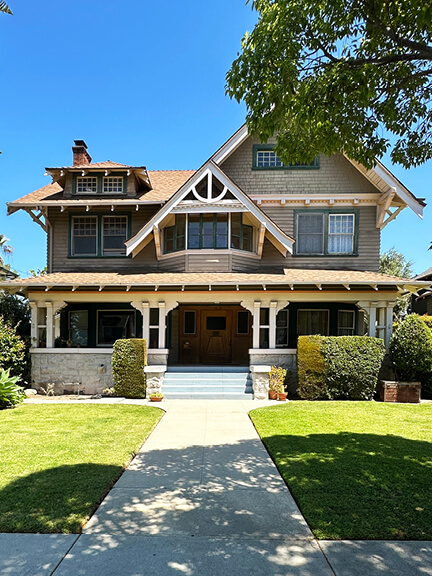
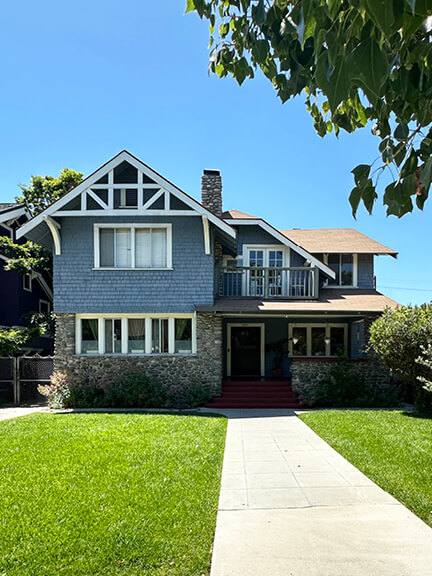
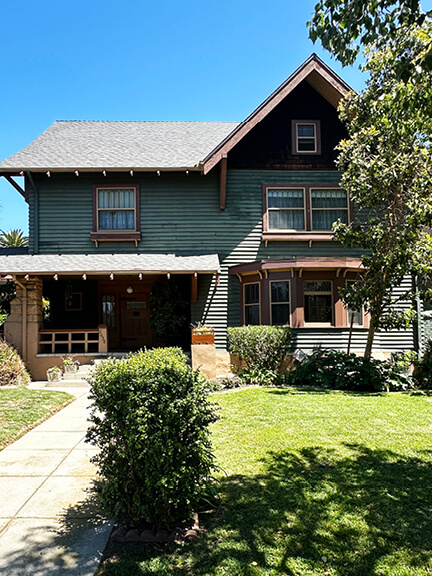
Griffith Observatory | Art Deco and Panoramic Views
Griffith Observatory is hard to miss—a dome visible from many locations in Los Angeles. I didn’t make it inside, but the exterior is extraordinary. The aged copper-clad dome contrasts beautifully with the pristine white concrete structure. Greek key patterns wrap around the building’s frieze, and oxidized metal doors and windows give off a soft green hue. The views of the city are worth it—offering a clear sense of that LA-sprawl. I picked up on Art Deco influences at the tall arched doors, especially the three linear details at the center of the arches and geometric metalwork in the panels. The main bronze doors, less oxidized, feature planetary motifs in low relief. I was bummed to miss the interiors—but honestly, the views alone were worth the trip into the hills. Plus, a great view of the Hollywood sign.

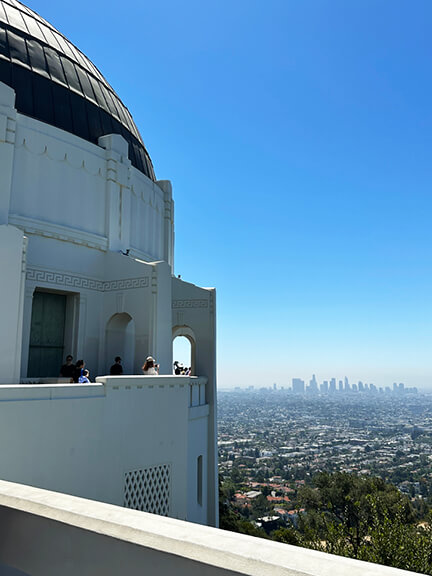
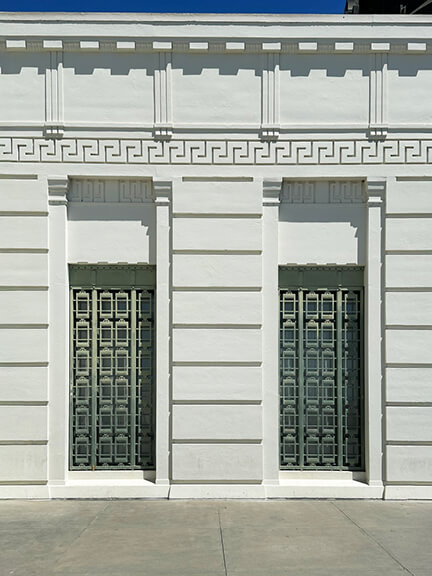
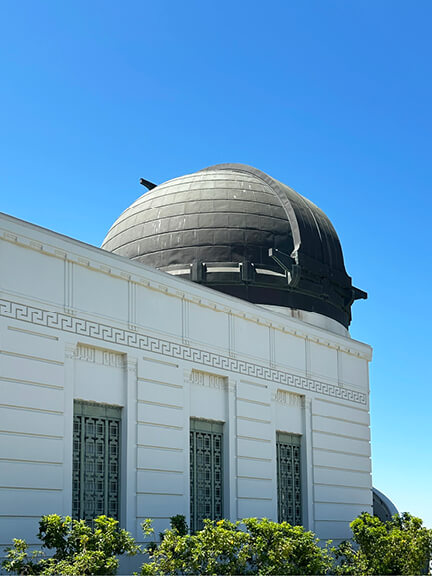
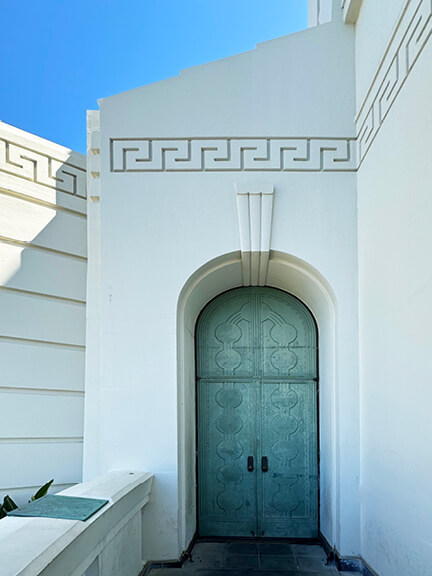
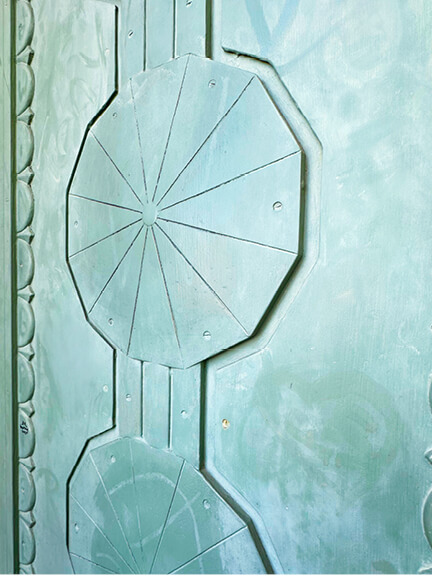
Chateau Marmont | Gothic Revival Meets Old Hollywood
Chateau Marmont—known for its risqué past and a long list of celebrity guests and drama—surprised me with its small footprint. Still, I was in awe of the Gothic Revival architecture, inspired by a French château and built in 1927. The retro neon signage sets the stage for its old-school, lived-in glamour. The entry is charming—not grand—positioned right at the top of the carport and garage. Painted brick walls, a green floral striped awning, and a vintage area rug greet you, along with bamboo furniture in hunter green upholstery and fringe. Delicately designed doors lead the way, flanked by fresh palms in aged urns.
The entry corridor stays simple: black floors, white walls, and antique furniture. I especially loved the small stenciled motif above a damask-wrapped settee—easy to miss but worth a pause. Several dining spaces include a moody bar with silk-shaded lighting and upholstered wall panels. The bathroom features William Morris wallpaper and marble tile. Massive Gothic-inspired doors and arched ceilings with painted detail recall the kind of space you’d expect in a church—even though this hotel is probably anything but holy.
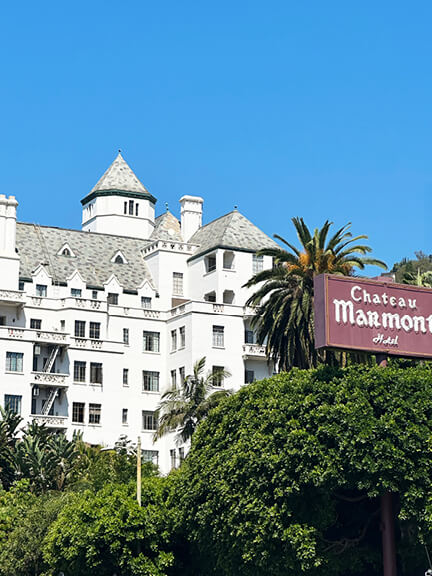
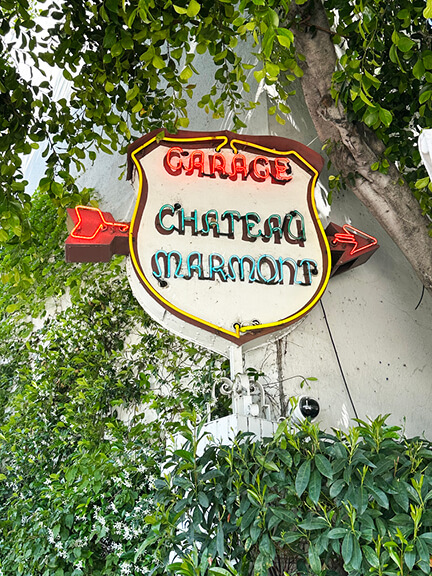
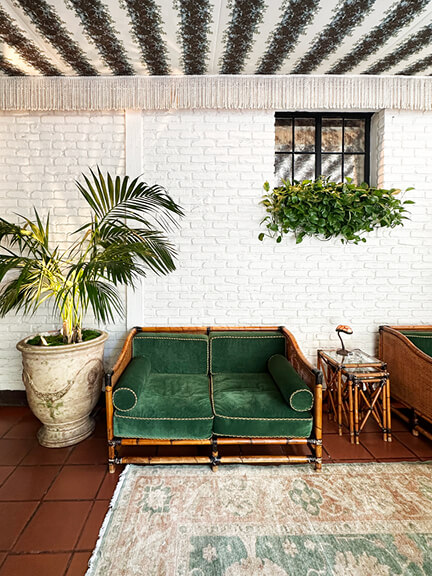
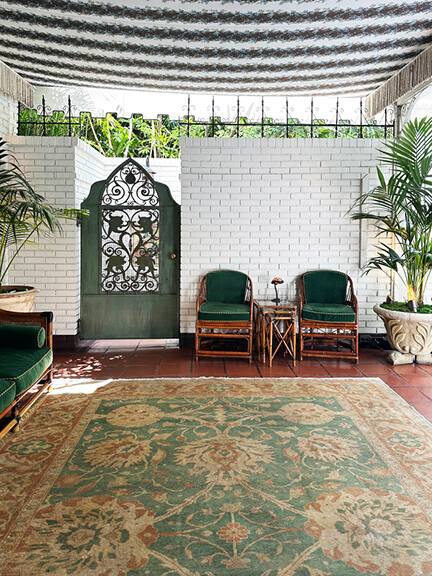
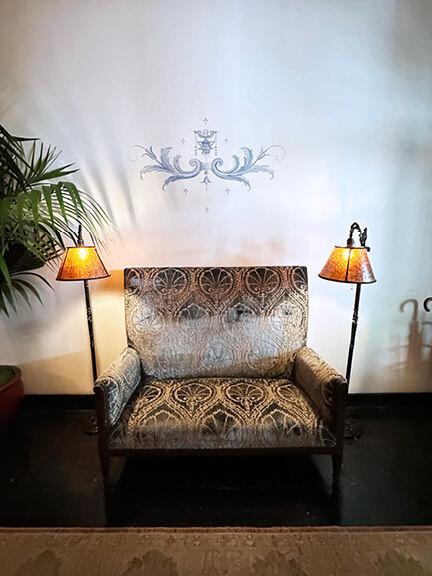
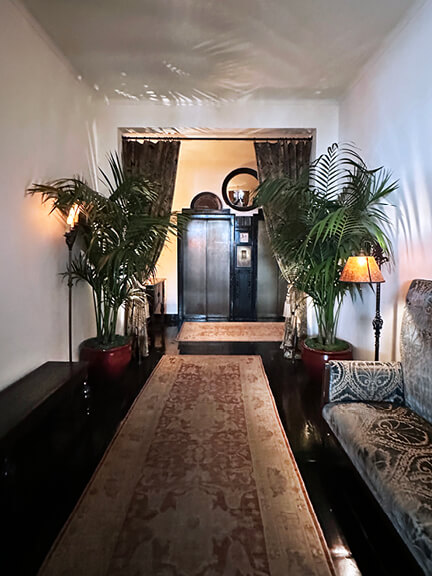
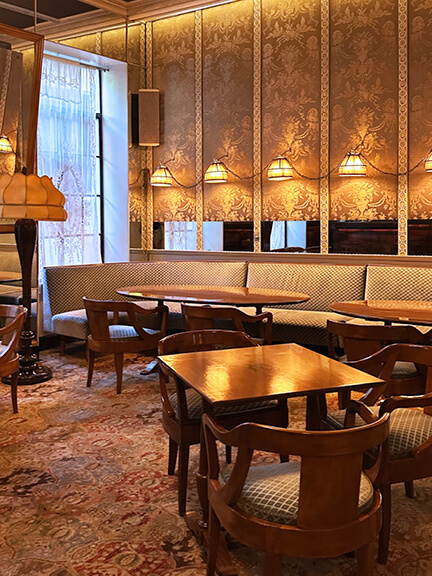
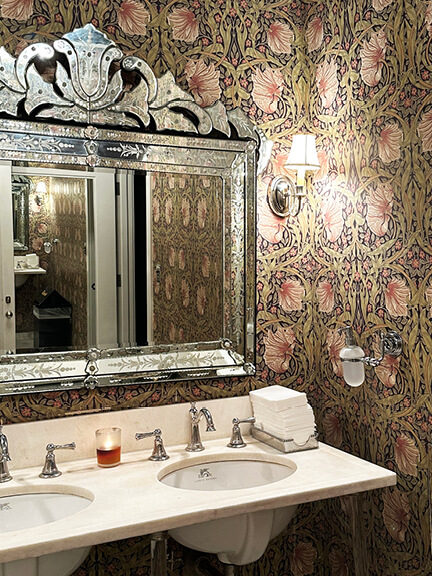
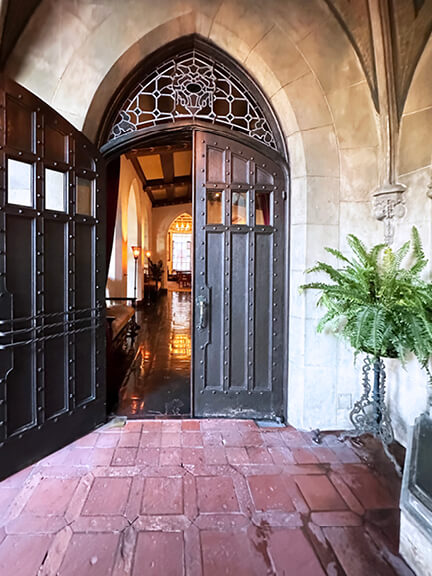
Santa Monica Pier | Streamline Moderne and Seaside Nostalgia
Santa Monica—the last stop of my day—was quite the scene. I imagine many people end their day here looking for golden hour. A striking blue and yellow sign greets you before the pier, featuring Streamline Moderne lettering and a restored design originally installed in 1940. There are plenty of kitschy moments: Pier Burger with its red-and-white striped awning, bold colors, neon signage, and, of course, an oversized ice cream cone fixture.
More fun awaits at the Pacific Park amusement area, with a (solar-powered) Ferris wheel and a bright steel roller coaster. I couldn’t help but notice the light fixtures—like a true designer—their sinuous, Deco-inspired lines caught my eye. Down the street, I paused to admire The Georgian, a 1933 Art Deco hotel, recently renovated with bold teal and gold details that give off serious Miami vibes. Lastly, I passed a darling light pink building with light green shutters and awnings, one massive palm tree, and a burst of magenta bougainvillea.

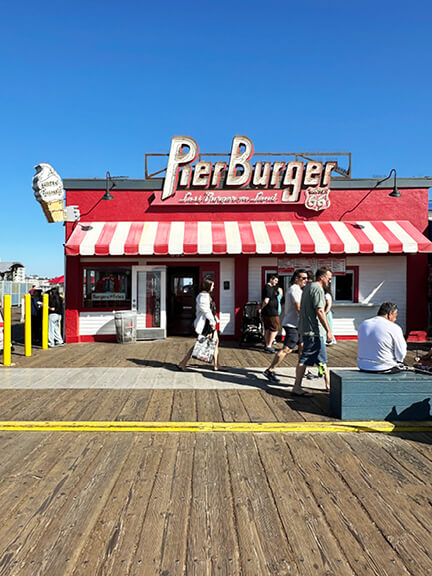
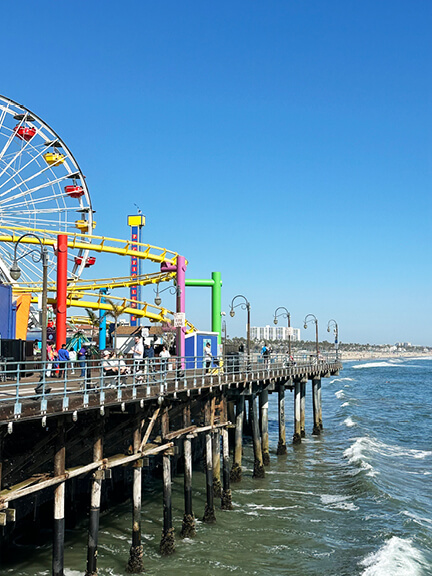

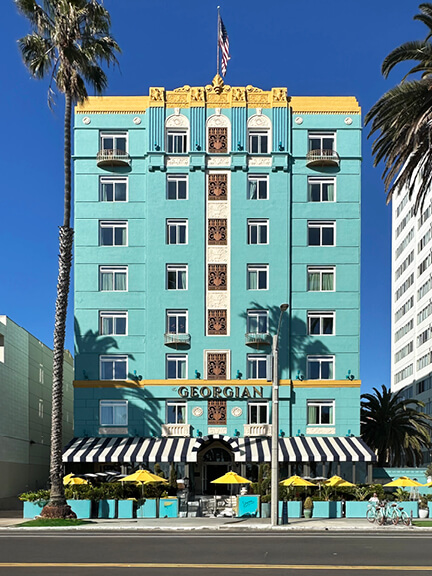
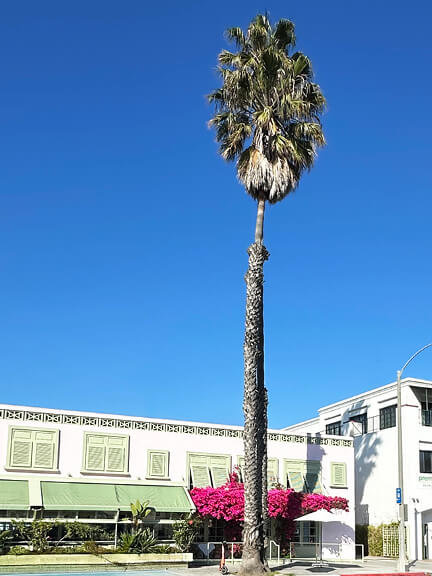
The Beverly Hills Hotel | Maximalist Spanish Colonial Revival
The only place that can successfully merge red and green without feeling like it’s Christmas. The Beverly Hills Hotel did not disappoint, giving me all of the Dorothy Draper vibes (though she wasn’t the designer). Beyond the red and green, an infusion of pink stucco truly blends into the Spanish Colonial Revival architecture seen throughout LA. Darling signage, cursive greetings, and a bold striped motif mark the grand entrance, with statement awnings throughout the property as one enters and exits the hotel. I couldn’t resist a wall of the famous banana leaf motif (Martinique, designed by Don Loper in 1942). Real tropical plants to boot. My only complaint—they close the pool bar early, and I missed cocktail hour…
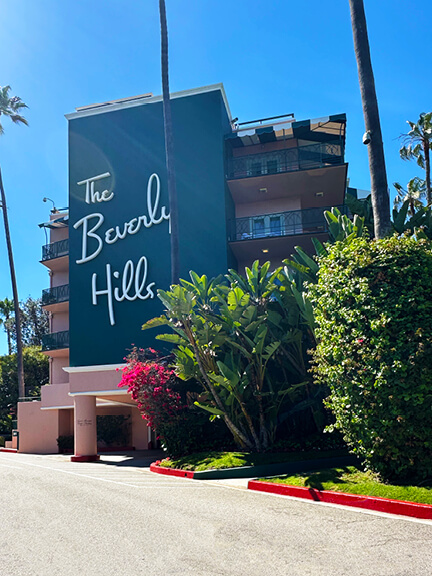
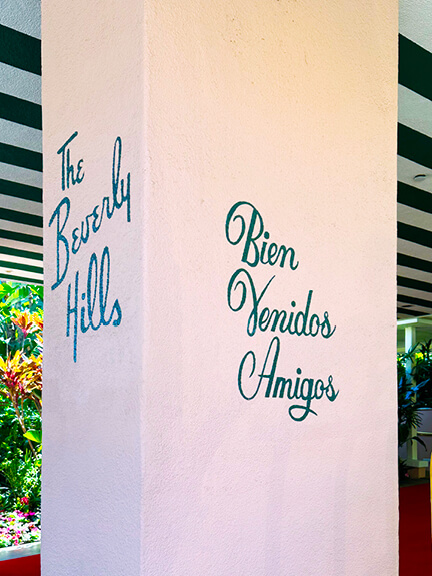
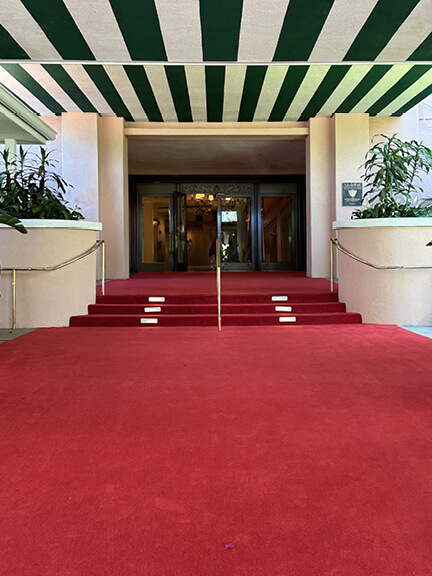
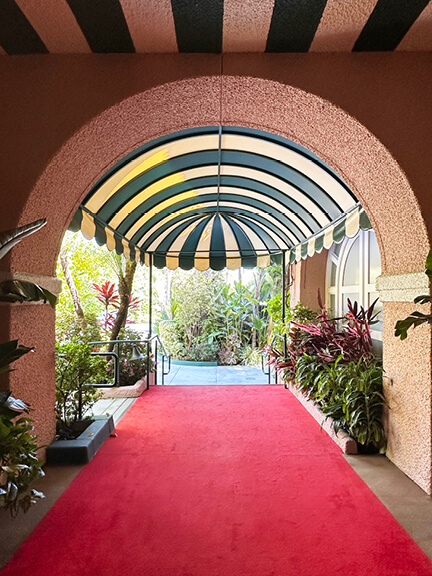
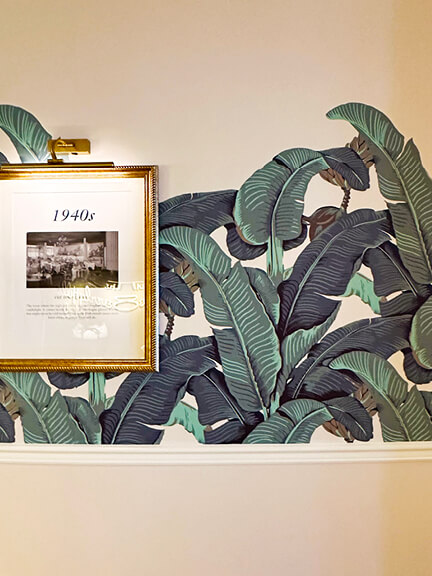
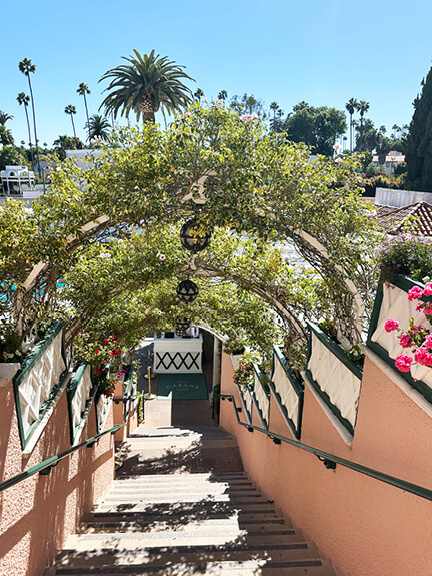
Los Feliz | Spanish Colonial Revival and Postwar Pastels
Tucked into the hills of Los Feliz near Griffith Park, Glendower Avenue and Catalina Street are lined with homes from the 20s to 40s that show off LA’s love affair with Spanish Colonial Revival and Mediterranean styles. Think smooth stucco, red tile roofs, arched windows, and iron details. All classic touches that still feel right at home in the California. One highlight is a Spanish Colonial Revival by Carleton Winslow Sr. on Catalina Street, a designer known for shaping the style in early 20th-century LA. Up on Glendower, pastel stucco exteriors and curved facades hint at evolving postwar tastes, with a more relaxed take on those earlier forms.
And then there’s the Ennis House. Designed by Frank Lloyd Wright in 1924, it’s a sharp departure from the romantic styles nearby. Made from patterned concrete blocks and inspired by Mayan temples, it feels more like a futuristic sculpture than a home. Sitting high above the street, it’s a reminder that even in LA’s early days, architects weren’t afraid to take big swings.
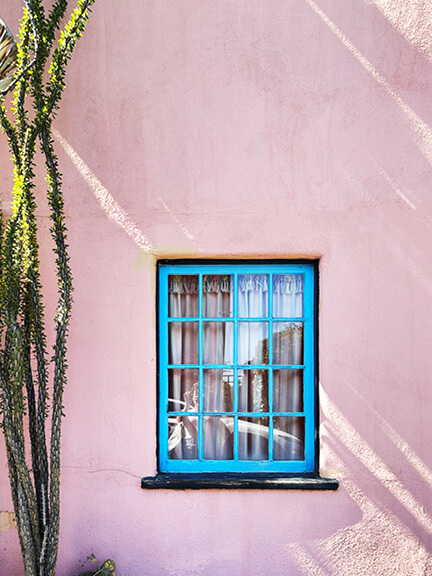
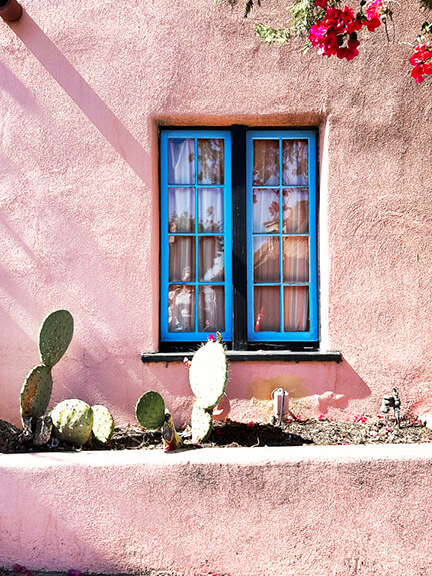
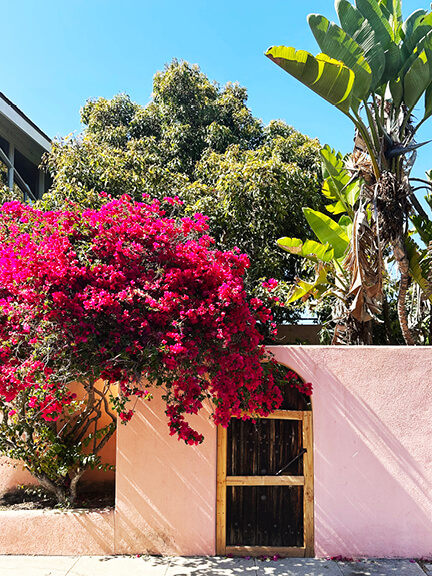

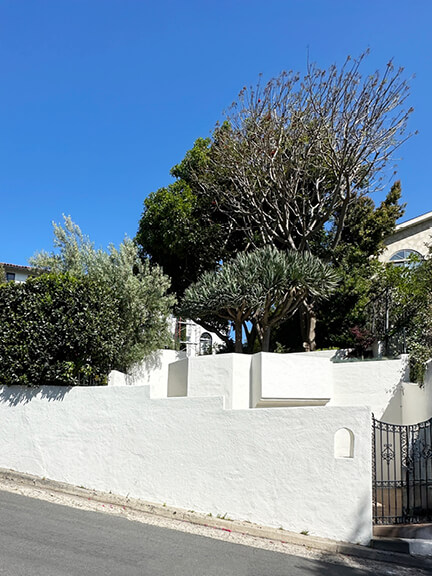
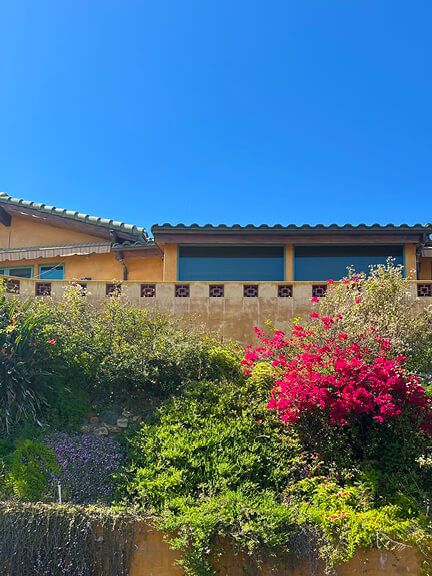

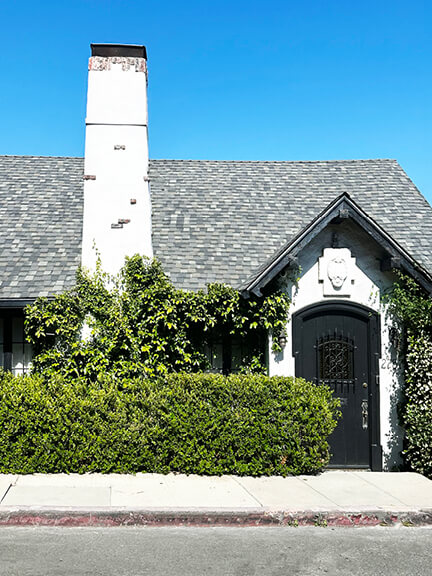
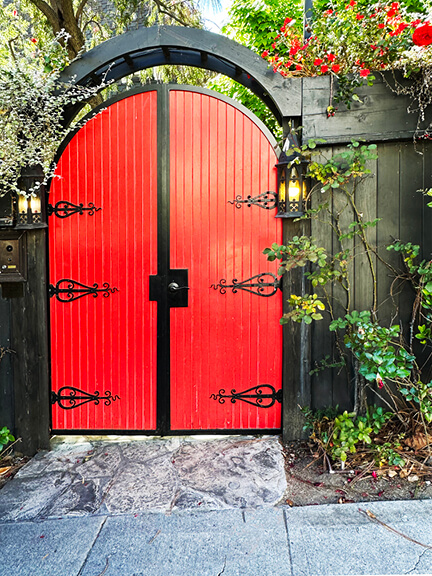
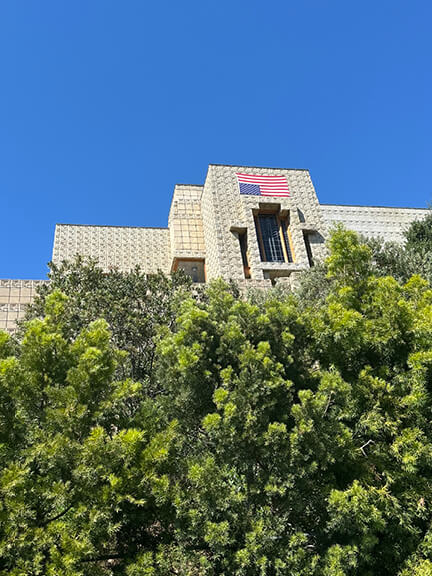
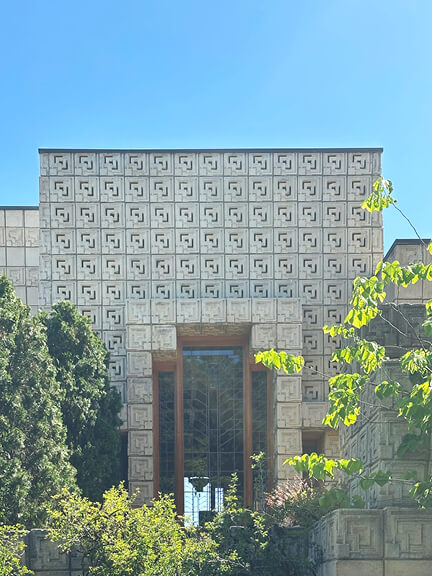
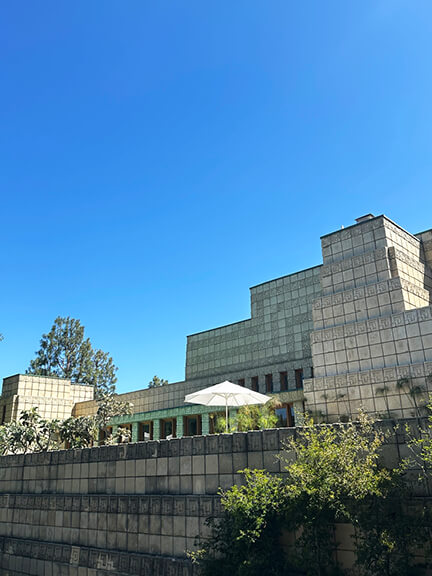
South Pasadena | Craftsman, Prairie, and Storybook Style
South Pasadena’s architectural story begins at the Historical Museum, a former 1880s grocery and ticket office that anchors the area with old-school charm. I loved Milan Avenue, a 1912 Tudor-influenced Craftsman at showcases a generous wraparound porch and leaded-glass windows.the 1917 Prairie-style estate, designed by Harry H. Whiteley, features strong horizontal lines and Arts & Crafts detailing.
Moving through the neighborhood, a trio of revival styles adds depth and variety. A 1922 English Revival leans into steep roofs and asymmetry, while the 1924 French Eclectic home brings a softened façade and romantic details. A Colonial Revival, built in 1916, introduces classical balance with a nod to East Coast tradition. Nearby, three homes lean whimsical: the storybook English Revival (1924), the Spanish Colonial Revival (1927), and another storybook cottage (1941), each offering a playful lens on South Pasadena’s layered character.
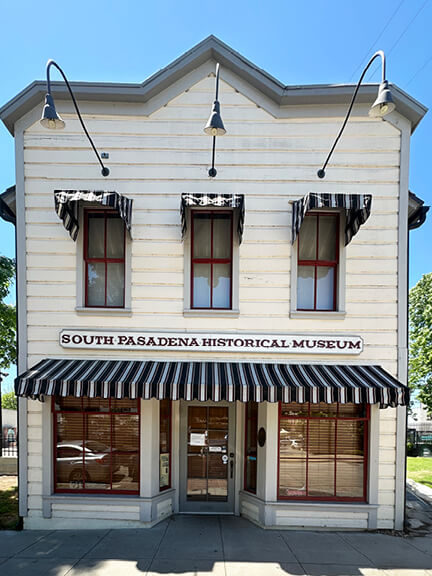
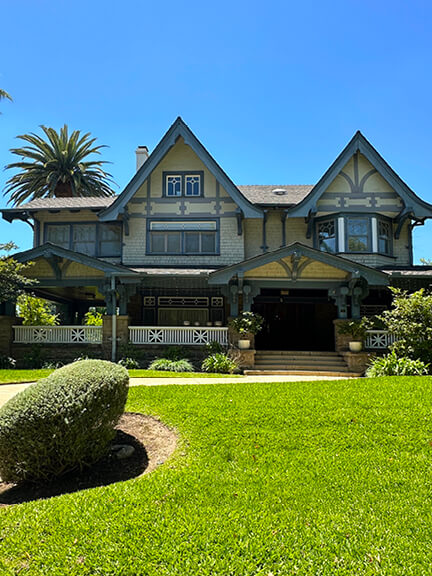
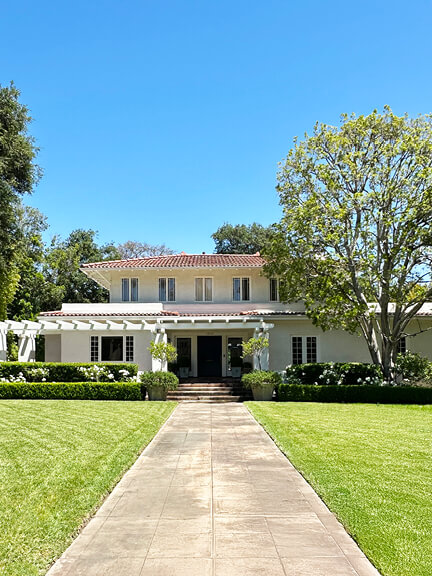
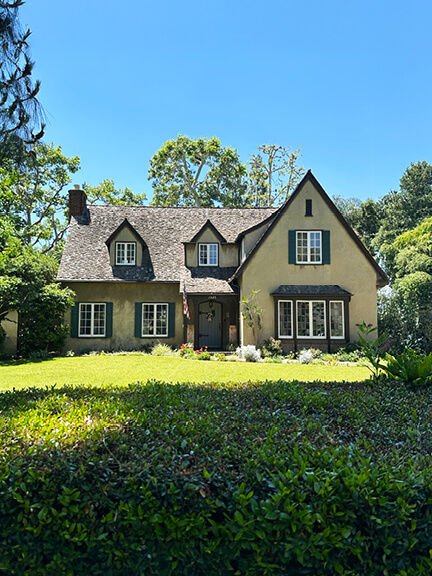
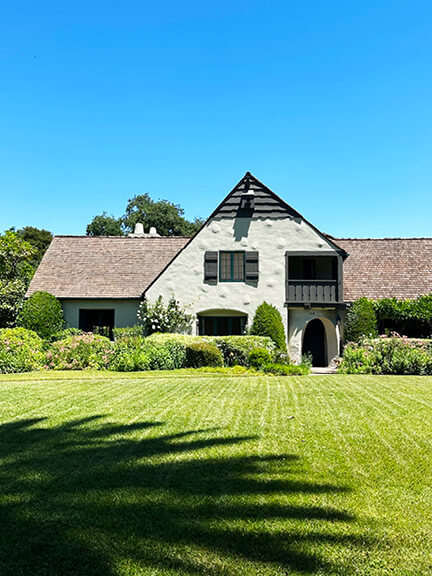
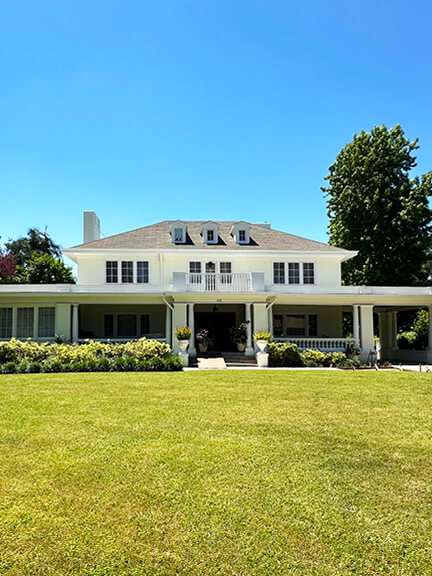
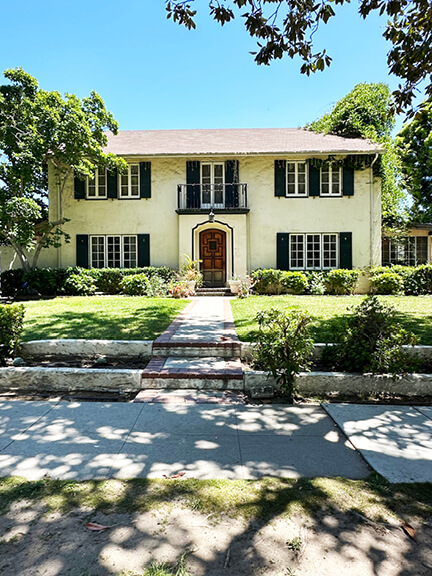
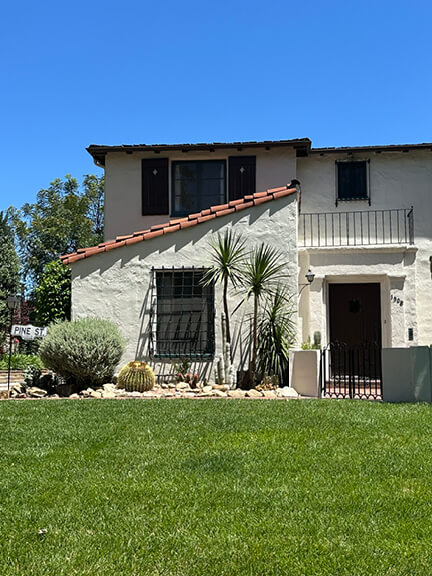
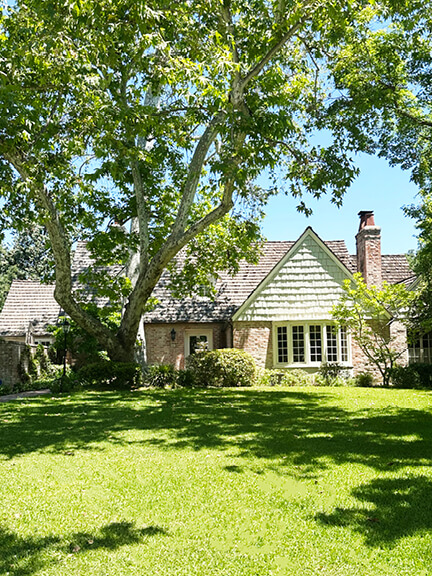
Well-Preserved Homes & Landmarks
I didn’t cover everything—that wasn’t the point. These are simply the places that made me stop and take a second look. Some I’ve seen before; others I caught at just the right moment. It was a good couple of days with my camera and a reminder that Los Angeles still holds many layers to uncover. If you’re interested in historic homes, check out my list of stops below. For more LA interior design related information, check out my post about the design scene, and read more about how travel inspires our work.
Hancock Park & Windsor Square | Classic Revival Architecture in Los Angeles
- Start on South Windsor Blvd at 6th Street walk north towards 3rd Street
- Head over to South Larchmont Blvd and head north towards 1st Street
- Take 1st Street to South Arden Blvd and walk towards Rosewood (Larchmont area)
- North Larchmont Blvd (at corner of W 1st Street) has all the essentials—ice cream, coffee, bagels—and plenty of great spots for a casual lunch.
- Upscale boutiques include Diptyque (French scents, if you know you know), Res Ipsa (home of the coveted Kilim shoes), CH Boutique (Italian-made goods), and Cookbook Market & Café (gourmet provisions).
Angelino Heights | Historic Victorian Homes in LA
- Start at East Edgeware Road and head down Carroll Ave, 1345 (the Thriller house), 1329 (the Charmed house)
- Turn on West Edgware Road and check out Kellam Ave, smaller but just as many cute Victorianss
West Adams | Colonial Revival Architecture
- Start at 3115 West Adams Blvd, The Fitzgerald House
- Continue Down West Adams (towards downtown LA) and check out Van Buren Place (not walkable)
- Van Buren between W Adams Blvd and W 27th Street – a short street (one side with no access) and easily walkable.
Griffith Observatory | Art Deco Influences in Los Angeles Landmarks
- Uber up to Griffith Observatory from North Vermont Ave, just north of Los Feliz. (a large main parking lot with plenty of car and bus drop-offs—a field trip favorite, so expect families and kids.
- Head along the path toward the Astronomers Monument for a closer view of bronze accents and frieze motifs
- Catch the view of the Hollywood sign from the north-facing walkway
- There are tons of hiking trails nearby—make it part of a workout or a scenic detour after exploring Los Feliz.
Chateau Marmont | Gothic Revival Meets Old Hollywood in West Hollywood
- Begin at the entry on 8221 Sunset Boulevard to admire the painted brick façade and striped awnings, you need to cross the street to see the full building
- Walk the drive up to the main entrance to spot carved doors and urns with tropical plantings
- Don’t miss the vintage signage and original architectural elements visible from the sidewalk
- Stop in for a drink or breakfast (service starts at 6:30 AM). The vibe is all about discretion—no obvious photos, please. Expect $20 cocktails, solid food that’s more classic than cutting-edge, and a beautiful, lived-in atmosphere that makes it all worth it.
Santa Monica Pier | Streamline Moderne Details at the California Coast
- Start at Colorado Avenue and walk under the blue-and-yellow Santa Monica Pier sign from 1940
- Pause near Pier Burger for a glimpse of playful neon and red-striped awnings
- Head down Ocean Avenue to see The Georgian’s bold teal façade and Deco-inspired curves
The Beverly Hills Hotel | Spanish Colonial Revival with a Maximalist Twist
- Walk the palm-lined entry drive to take in pink stucco, striped awnings, and tropical planting
- Pause at the famous green-and-white sign with cursive script near the valet area
- Circle to the rear garden lush palms and the iconic banana leaf wallpaper
- The pool bar closes at 5pm, grab a drink without any issues—just dress the part and blend in. Skip the touristy vibe, and you’ll fit right in.
Los Feliz | Eclectic Revival Styles in Eastside LA
- Begin Glendower Avenue and head east toward Catalina Street
- Detour onto N Catalina to catch 246 N Catalina, a Spanish Colonial Revival by Carleton Winslow Sr.
- Cap it off with a stop at Ennis House (2607 Glendower Ave). You can’t go in, but the view from the street is worth it
South Pasadena | Craftsman Homes and Tree-Lined Streets Near LA
- Start at the South Pasadena Historical Museum on Meridian
- Uber north towards Milan Avenue—don’t miss 1525 (Craftsman) and 1228 (Prairie).
- Loop back via Buena Vista Street for views of Revival-style homes tucked into quiet residential blocks.